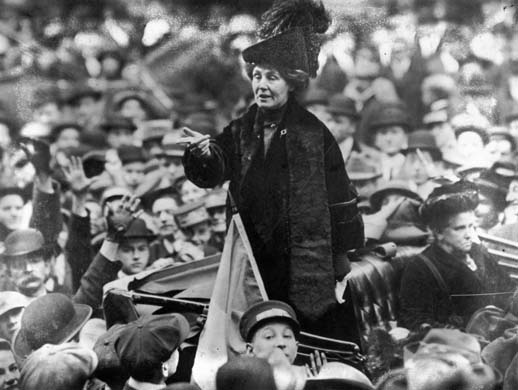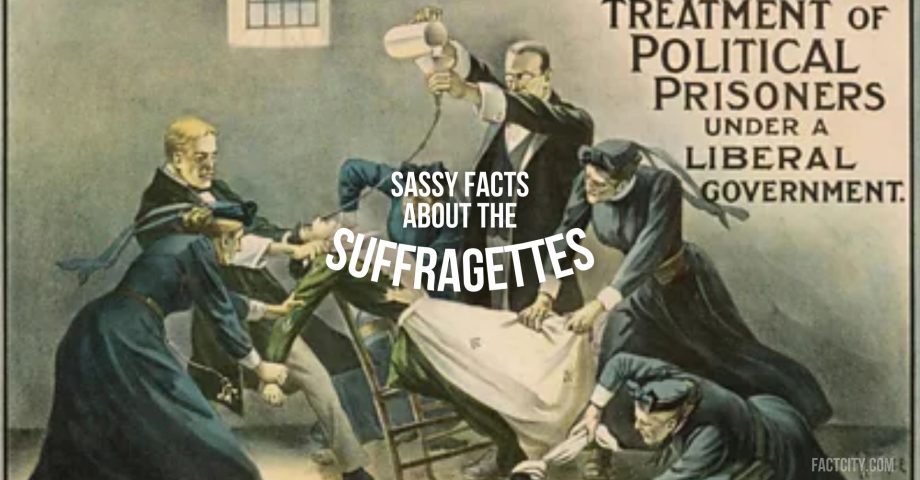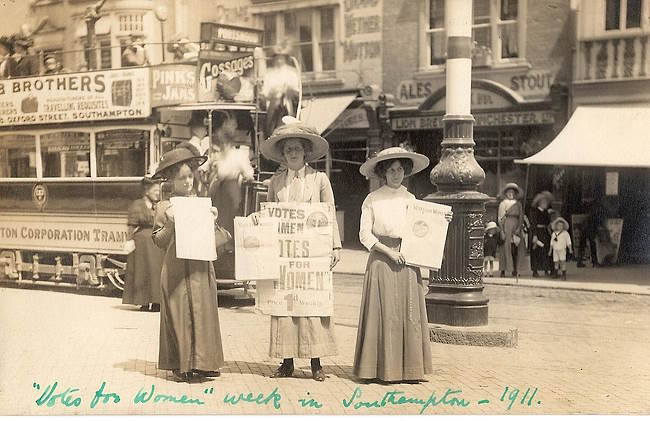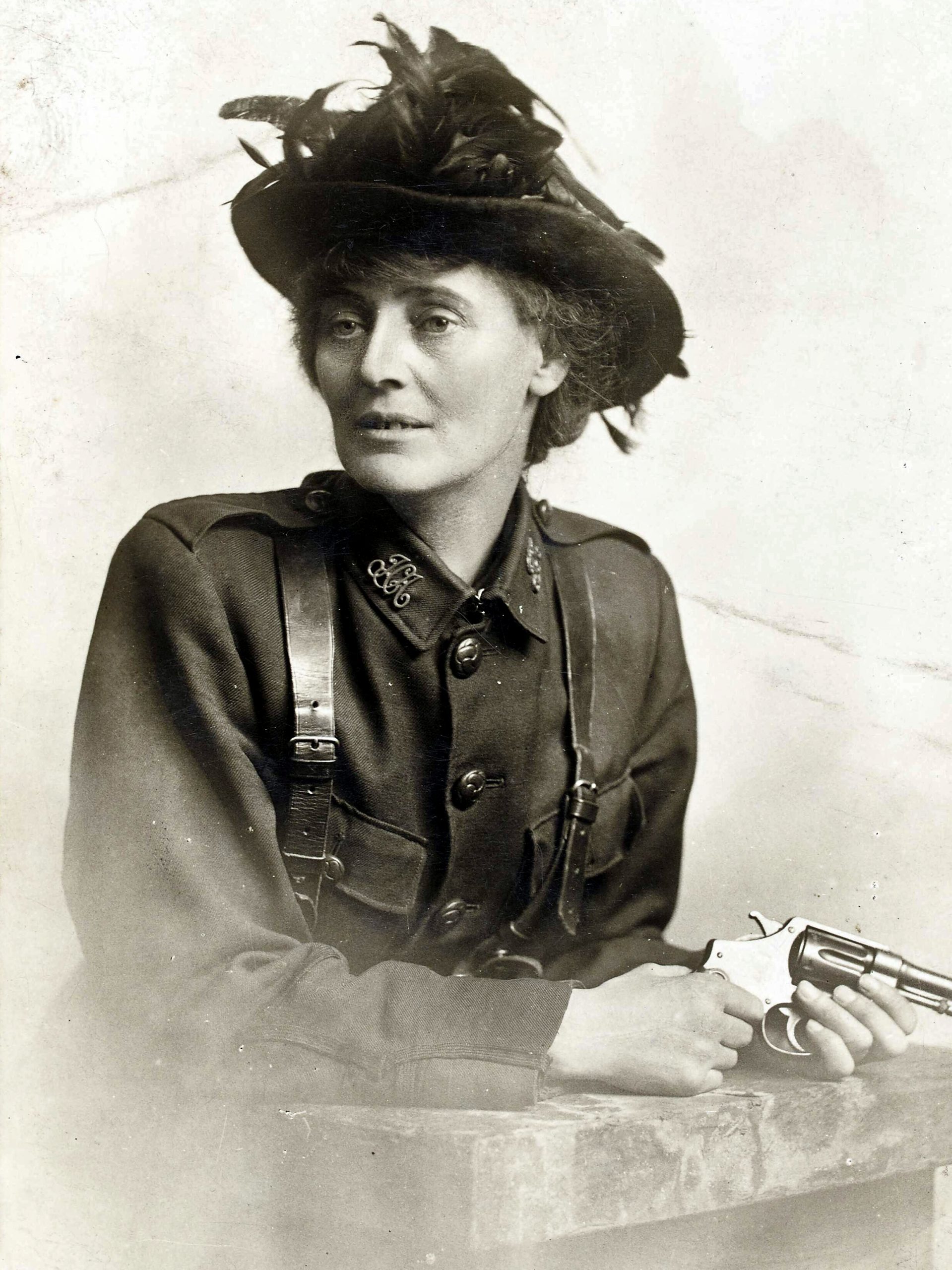When we think of the Suffragettes, many of us tend to think of large groups of women striking, burning bras, and protesting in the streets. And, to be fair, we wouldn’t be wrong!
Suffragettes were bold, empowered, and determined women who played a pivotal role in ensuring that women in the UK received their basic rights.
But how much do you know about this key movement? Here are some of the most important facts about the Suffragettes that are worth remembering in supposedly enlightened times.

1. Suffragettes were members of women’s organizations.
Suffragettes were people who were members of women’s organizations formed in the late 19th and early 20th centuries. These organizations specifically advocated for women’s rights to vote, but they also fought for other equality rights.
Many view the term to represent the more militant members of the women’s Suffrage movement in the UK.
However, it is important to note that many Suffragettes pursued peaceful change – and many chose to take bold action so people would stand up and notice.
2. The movement kicked off in the early 20th century.
The Suffragettes officially started to take action around October 1903, thanks to the WSPU (Women’s Social and Political Union). This group was one of the most, if not the most prominent Suffragette group of its time.
The WSPU was founded by the legendary Emmeline Pankhurst alongside her daughters Sylvia and Christabel, but more on them later!
The Suffragettes rose to prominence after several territories had started to give women the right to vote. Why shouldn’t the UK follow New Zealand?
3. The movement featured a lot of key figures
As you can see above, the Suffragette movement featured many key figures. Emmeline Pankhurst was one of them and is likely the best-known activist to this day. She was known for her passionate speeches, militant tactics, and dedication to the movement.
Emmeline Pankhurst’s daughter, Sylvia Pankhurst, who later broke from the WSPU, was known for her work for working-class women’s rights and her opposition to World War I.
The movement also featured some well-known figures such as Lady Constance Lytton. She was an aristocrat who used her position to bring attention to the Suffragette movement.
She tragically endured imprisonment and force-feeding during her time in the movement.
However, we can’t avoid speaking about the bravery of Emily Davison. She famously died during the Epsom Derby of 1913, when she’d stepped in front of King George V’s horse.
4. They were very militant fighters.
As mentioned above, the Suffragettes were known for their militant tactics. Some of their most famous tactics involved protests, hunger strikes, and, in severe cases, even acts of vandalism and arson.
Interestingly, the movement’s slogan was “Deeds, not words.” This slogan showed the Suffragettes’ interest in action, and the need to take it. Sitting around accepting the status quo was doing more harm than good, and was certainly never going to bring change!
5. The movement used specific colours
The Suffragettes used very specific colours to represent their movement. For example, they chose purple for dignity, white to represent purity, and green to symbolize hope.
The movement’s symbolism was key to defining it, showing its strength, and becoming something so recognizable that you could not ignore it. However, many did try!
The Suffragettes are sometimes signified by a flag of three horizontal stripes, running purple, then white, then green. If you ever see the flag from now on, you know exactly what it means!
6. The Suffragettes oversaw many strikes.
There were indeed multiple strikes in the Suffragette movement, including multiple hunger protests. The first hunger strike was initiated by Marion Wallace Dunlop in 1909. She was imprisoned, and so began her hunger strike, demanding to be recognised as a political prisoner.
Eventually, in 1913, the Cat and Mouse Act was passed. It was officially known as the Prisoners Temporary Discharge for Ill Health Act. This act allowed for the temporary release of Suffragettes that were on hunger strikes. That is, until they were healthy enough to be arrested again.
7. The movement had its own newspaper
The Suffragette Newspaper was launched in 1912 by the WSPU. The newspaper served as a form of propaganda for the movement as it allowed the Suffragettes to communicate with as many people as possible, making their actions heard and seen by the masses through their own voices.
Emmeline Pethick-Lawrence was another key figure in the movement, as she played a crucial role in the financial management and publicity of the WSPU, helping it to endure and reach as many people as possible. She even chose the movement’s colours.
The previous newspaper of the WSPU was known as Votes for Women.
8. A particular boycott had a huge impact
In 1911, the famous Census Boycott helped to put the Suffragettes into the headlines. This boycott was caused by Suffragettes refusing to be counted as part of the UK’s official citizenship poll.
They stated that, “If women don’t count, neither shall they be counted.” Tens of thousands of women, therefore, refused to be counted, making the census useless!
9. There were many fires caused during Suffragette demonstrations.
As part of their militant actions, many Suffragettes also led an arson campaign. Some of their targets included empty buildings and railway stations. The Firebomb Campaign also took place in the unoccupied homes of politicians. All of these were done specifically to avoid harming people, despite what their opposers enjoyed saying!
Window smashing was another popular Suffragette militant tactic. Members of the movement commonly broke windows in government buildings and shops. In fact, a coordinated window-smashing campaign in London in March 1912 ended with over 150 women being arrested in a single night! Chaos was raining down on the capital!
10. Men could also support the cause!
Just because women supported the Suffragettes to fight for their own rights, didn’t mean men couldn’t get behind the cause, too. In fact, many British men chose to stand their ground and get behind the Suffrage movement.
The Men’s League for Women’s Suffrage was founded to encourage men to support the women’s cause. Some of the most prominent members of this particular group included people such as George Lansbury and Henry Nevinson.
11. All militant action was eventually suspended.
During World War I, the WSPU stopped all militant activity. Instead, the movement focused on supporting the war effort. This effort did not slow the movement down, but instead helped improve their public image.
In fact, it wasn’t long after the end of the Great War that women of the movement started to receive the recognition they had been clamoring for.
12. Change finally came in 1918.
In 1918, the Representation of the People Act finally granted voting rights to women!
However, only women over the age of 30 were allowed to vote.
Yet, the act changed the voting rights for men to be available once they turned 21. So, while it was indeed a step forward for the movement, this change also showed the need for even more change!
It wasn’t until 1928 that women in the UK received their full voting rights. The Representation of the People (Equal Franchise) Act finally granted equal voting rights to women over 21.
13. Fashion played an important role in the Suffragette movement.
Despite what many might assume, the Suffragette movement’s fashion was very feminine yet practical! In fact, it was deliberately so to oppose any negative stereotypes that could be linked to the women in the movement.
The activists’ feminine wardrobe showed that while the women were fighting and expected their political rights, this did not make them any less women – they could still dress how they wanted and act as they pleased.
Suffragette sashes also became important symbols of the movement. The colourful sashes were worn during protests and marches, and are still iconic to this day.
14. The Suffragette Fellowship was born in the 20s.
In 1926, the Suffragette Fellowship was formed. The Fellowship was made to document the history of the movement, preserve records, any artifacts, and even personal accounts from the Suffragettes themselves.
The Fellowship played a crucial role in enabling future generations to better understand exactly what happened and what those women did for equality.
Its aim was to keep the spirit of the Suffragette movement alive. Just because they’d won the right to vote, didn’t mean the fight for equality was over and done.
15. The movement had multiple martyrs.
Tragically, the Suffragette movement was also known for losing multiple martyrs. The martyrs are the women who suffered greatly or even died for the movement.
For example, as mentioned above, Emily Davison is possibly the most famous martyr of the cause, but countless women were harmed in their fight for equality.
For example, many women were force-fed during their hunger strikes. This brutal method was widely condemned and even helped gain sympathy for the women of the movement, but at what cost?
16. The movement had an international impact.
The UK Suffragette movement did much more for women everywhere than you might think! Their actions and commitment to equality inspired people all over the world to take action.
In fact, movements formed in the US, Australia, and New Zealand! These other countries drew inspiration from the UK Suffragettes’ tactics and successes – and for New Zealand, that’s even after NZ women had won the right to vote.
17. There was also an anti-Suffrage movement.
Of course, there were also plenty of people who were opposed to the movement. The Anti-Suffrage Movement included both men and women who believed women’s Suffrage would disrupt societal norms.
Thankfully, those people did not come out on top! However, not all opposed to certain elements of the movement were outside of it.
There were certain members of the group who were against the more militant methods, arguing that the violent acts of the Suffragettes turned more people against them rather than encouraging them to join the cause.
The Suffragettes also faced strong opposition from many MPs. Prime Minister Asquith was a notable opponent of women’s Suffrage.
18. The movement had its own anthem!
Ethel Smyth was another famous Suffragette. She was known for having written “The March of the Women,” an anthem for the movement. The anthem inspired the women involved, and helped strike fear in those opposed! It was definitely a great piece of music – why not go find it and listen to it if you need some pep?
19. Some Suffragettes needed asylum.
Fearing arrest and the repercussions of it, some Suffragettes even sought asylum in other European countries or the US.
Sadly, it is not surprising these women needed refuge. The British government, including MI5 and Special Branch, closely monitored Suffragette activities and even kept files on the leading women.
Following arrests, many Suffragettes were infamously detained in horrible conditions. The prisons were overcrowded, and many were placed in solitary confinement.
20. Many Suffragettes were arrested.
Many Suffragettes were indeed arrested multiple times! For example, Emmeline Pankhurst was famously arrested about 15 times!
However, her arrest somewhat worked in the movement’s favour, as upon one of her releases from prison in 1913, she delivered one of the most famous speeches from the movement.
Her quote, “I incite this meeting to rebellion!” became a rallying cry for women and men within the movement. And, again, it’s remained iconic in the decades since.
21. The movement used and faced a lot of propaganda.
For such a huge and pivotal movement, it is no surprise that the Suffragettes, and their opposition, used propaganda to sway the public view.
The Suffragettes used posters, pamphlets, and plays to spread the movement’s message and reach as many people as possible. They even produced postcards and other memorabilia to raise funds for the movement.
And, it’s safe to say that the Suffragettes won the war of propaganda. Even now, you can check out some of the more effective flyers, posters, and paraphernalia they used to extend their cause.
22. Many works of art were used to support the Suffragettes.
As it always has, art had an important influence on people during that time. And thankfully, artists such as Sylvia Pankhurst used their work to promote the Suffragette movement.
Art and litreature served a key purpose in helping to grow sympathy and understanding for the movement. Public opinion of the Suffragette movement was not always positive, especially following acts of vandalism and violence. So, having tangible pieces of work the public could see and read to help them better understand the cause was crucial.
23. Some Suffragettes were very skilled in martial arts!
As if the women in the Suffragette movement weren’t already cool enough, many of them were also very skilled in martial arts! Some trained in jiu-jitsu!
Edith Garrud famously taught self-defense. She did so to help women protect themselves from police and hecklers.
24. Women finally entered politics!
Following the war, certain Suffragettes entered politics, including Constance Markievicz. She was the first woman ever to be elected to the UK Parliament in 1918! She was a member of Sinn Féin. However, she did not take her seat.
At the time of writing, there have only ever been three female Prime Ministers in the UK. These women include Margaret Thatcher, who served from 1979 to 1990, Theresa May, who served from 2016 to 2019, and Liz Truss who served in 2022.
25. The Suffragette legacy lives on.
The Suffragette movement played an essential role in forwarding women’s rights in the UK, and across the world. The sacrifices these women made are undeniable, and should never be forgotten.
Even in this modern age, women all over the world are still facing violence, criticism, and even death in their pursuit of basic rights. That is why the message and goals of the Suffragette movement live on.
Will there ever be true equality the world over? Provided we are willing to fight for it, it’s something we can all get behind. To start, make sure to read more about the Suffragettes and their incredible fights for political freedom.
FAQs About the Suffragettes
Who is the most famous Suffragette?
Although there were many famous Suffragettes, the most famous likely remains Emmeline Pankhurst. She was the designated leader of the Suffragette movement in Britain and, as mentioned above, was known for her impactful speeches, strong stances, and militant acts in support of the Suffragette movement.
What happened to the 300 Suffragettes?
In 1910, Black Friday saw 300 Suffragettes attacked by male police officers and members of the public for around six hours as they stood outside of the Houses of Parliament.
What is the difference between Suffragettes and suffragists?
Suffragists were people who campaigned for women’s rights using only peaceful methods.
On the other hand, Suffragettes were known for their militant acts in trying to obtain women’s right to vote. The distinction is important, but they all got behind the same cause!
Further reading
https://www.museumoflondon.org.uk/museum-london/explore/who-were-suffragettes
https://www.findmypast.co.uk/blog/history/famous-suffragettes
Do you know any fun facts about the Suffragettes? Share them in the comments below!












